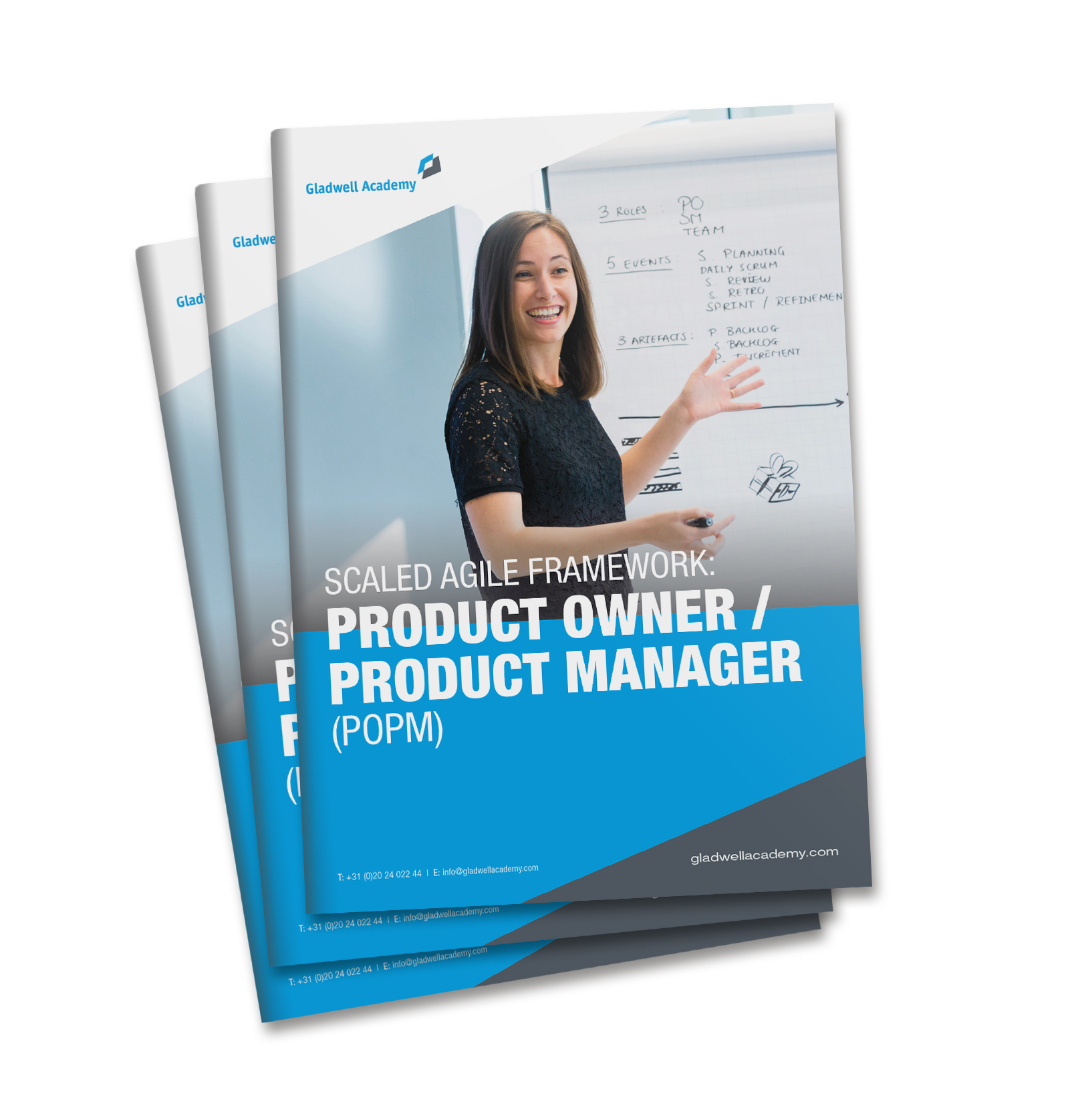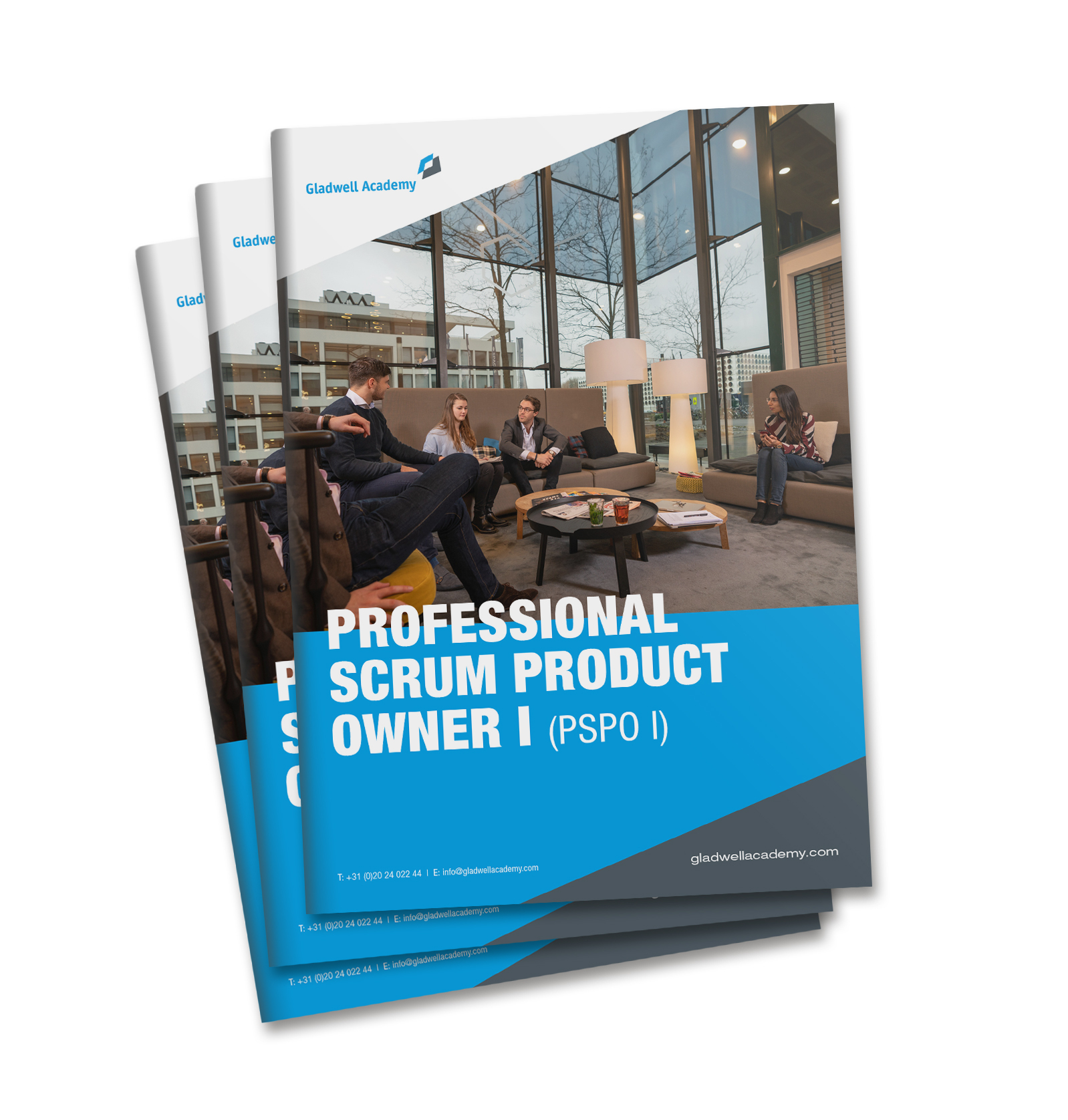Thinking about taking a Product Owner/Product Manager class at Gladwell Academy? View the digital brochure. We'll send the link directly to your inbox!
The Tasks of a Product Owner (PO)

The range of tasks
A Product Owner has a versatile range of tasks, focused on both his/her development team and the broader organization. The core tasks of this person are as follows:
- Forming a vision of the product which the team is working on
- Making decisions about the relevance of the work items and saying ‘no’ to stakeholders
- Prioritizing all the wishes and questions from stakeholders and clients
Without a vision, there is no valuable product
Before the team can start with developing a product, they need a vision. This vision consists out of client’s wishes and discussions with stakeholders and/or clients. A Product Owner retrieves information from the inside and outside of the organization. This requires the Product Owner to have a strong network from which valuable information can be retrieved.

When the Product Owner has enough input, a vision is created for the product which is going to be delivered. The sprints are the guiding principle for outlining the first steps towards development. The sprint is a forecast, or in other words, a short-term plan for the product. The sprint consists of the work items that a Product Owner represents on the product backlog (the work list).
In order to keep the process uncomplicated and streamlined, there is only one Product Owner per product, with one backlog. This backlog is clear to the team at all times. This ensures transparency for both the team’s shared vision and its work process and steps.
Making difficult deliberations
Within complex organizations, there are a lot of choices to be made. These include the following:
- Which work items should we deal with first?
- Which work items deliver the most value at that given moment?
- What should we do after we complete those work items?
- Which team is most suitable to deal with this task?
- Does a stakeholder’s question tie in with my vision?
The Product Owner’s mandate is crucial here, because without it, they cannot make any decisions, and the team will end up suffering from a lack of control over content. In response to the vision, they will indicate to the stakeholders what is and is not taken up by the team. This requires strong decisiveness and communication skills from a Product Owner. It is thus a constant deliberation about who will be informed when and how about advances within the team.
Continuous prioritization
The Product Owner has primary responsibility for the product backlog. Updating and keeping up with this work list is an important and time-consuming task. In order to ensure that the team always works on items that deliver the most value at that given moment, the Product Owner must carry out a number of tasks with respect to the Product backlog. This list includes the following:
- Prioritize the backlog items in line with the product vision and objectives
- Design the product backlog items, detailed in user stories during refinement meetings
- Ensure the transparency and availability of the backlog for the team and the organization
- Ensure that the backlog items are understood within the development team (by means of refinement meetings)
A good Product Owner is crucial in order to deliver a valuable product to the client.
Together, we stand strong
The Product Owner can delegate the work to the product backlog, but they do not maintain final responsibility. A Scrum Master coaches the Product Owner in this process. The Scrum Master also ensures that the team is not disturbed by the Product Owner or stakeholders, making sure that they can focus on performing their work.

Stakeholders that want to change an item on the product backlog must allow this to be done by the Product Owner, who can then adjust the priorities where needed. A good and efficient cooperation between the Product Owner, Scrum Master, and development team is crucial here.
As you can see, this role has a very varied range of tasks and responsibilities. This person thus has a substantial influence on the important work of the development team. If you want to read and learn more, grab the Scrum Guide!
To read more about the role of PO in Scaled Agile environment, read more here.


